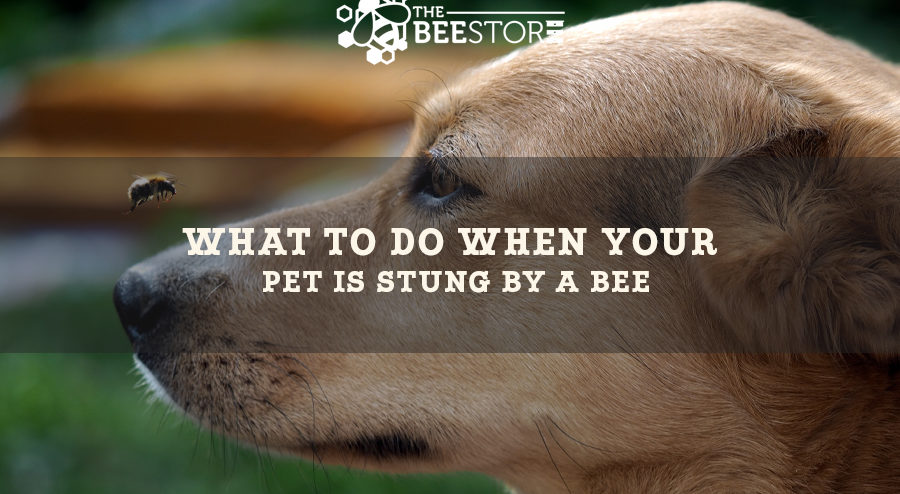** Disclaimer: Always follow your veterinarians advice when it comes to the care of your pet **
Who here has the “purrfect” companion? Which of you couldn’t “paw-sibly” live without your puppy? No matter what pet you have, I think we can all agree on the fact that we LOVE our pets.
I can tell you that my cats run the house and I’m just a guest in their little purring world. They are our alarm clocks and our garden guards as well as our snuggle buddies and our best friends. No matter what animal you have, you want the best for them and to keep them healthy. So what should you do if your furry family member gets stung by a bee? Do you just let them heal on their own? Do you rush them to the emergency vet? While all cases aren’t the same, we are going to tell you the typical steps you should take when your pet gets stung by a bee or wasp.
So, Fido comes into the house and he looks like his face is 5 sizes too big. What do you do? Who do you call? Well, take a deep breath first and let’s go over what is normal to see when your beloved pet has been stung.
The most common bees to sting are wasps and honey bees. Both of these insects do release venom when they sting which is what causes the swelling and pain. Remember, typically honey bees can only sting once as their stingers are barbed and stick within their prey whereas wasps have smooth stingers and can sting their victim repeatedly without leaving a stinger behind.
Swelling and redness are normal. Most often, dogs and cats will get stung around the nose (aka muzzle) because they sniffed just a little too close and made the bee uncomfortable enough to strike. Another place they often get stung on is the pads of their paws. Dogs and cats go running in the backyard and rarely see where they are going. Tiny bees and wasps are sometimes even hard for humans to spot let alone dogs and cats.
So, they got stung- now what? Most often, a cold compress and some rest will be all your pet needs to get over the sting. You might even be able to see the stinger on your pet and if you can- try and remove it by scraping it off rather than trying to pull it out. That will help with the healing and with the pain of your pet. Can’t find the stinger? There might not be one OR it could be that your pet tried to eat the bee/wasp and they were stung inside of the mouth. It will definitely be hard to check unless you have a calm pet. If your animal seems to be in a lot of pain or discomfort, sometimes it is best to head to the vet to have them help locate and assist.
Things to avoid? Definitely don’t buy over-the-counter meds for your pets. These are meant for humans and can sometimes be harmful to your pet. The best thing to do if you feel like your pet is in pain is to consult with your veterinary clinic first.
Does your pet have a high fever, heart rate and extended swelling from the sting site? This is something to take seriously and very much needs a vets expert opinion on.
No matter what or where your pet got stung, it is always good to keep an extra watchful eye during the healing process to make sure that your pet doesn’t have any adverse reactions so you can act quickly if the situation was to turn.

